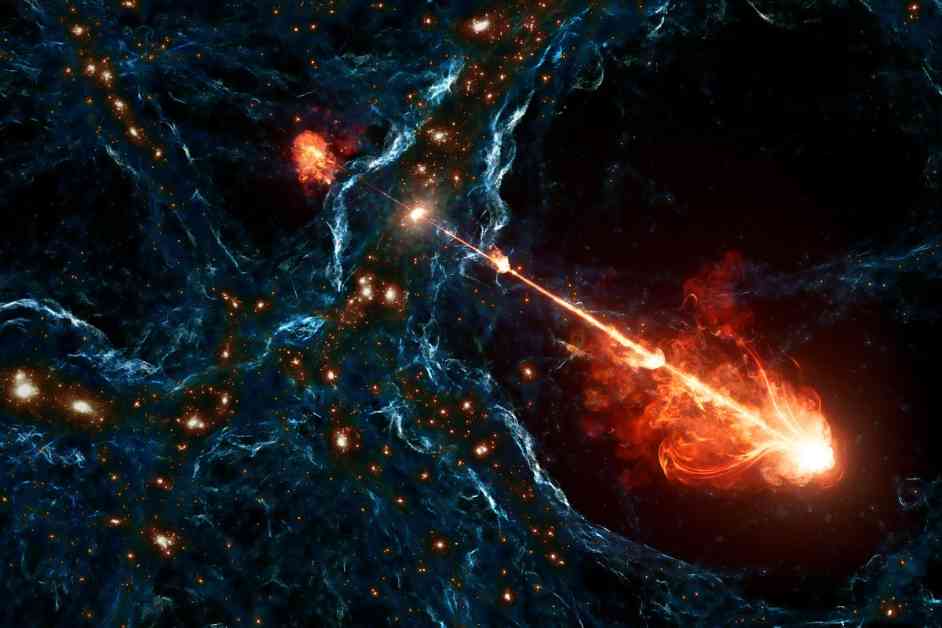An extraordinary discovery has been made by a team of physicists who observed the largest black hole jets ever seen in a galaxy 7.5 billion light-years away. These massive jets, named Porphyrion after a Greek giant, extend an incredible 23 million light-years, equivalent to lining up 140 Milky Way galaxies back-to-back. This discovery challenges previous assumptions about the impact of black hole jets on the cosmos and suggests that they may have played a crucial role in shaping the universe.
Black holes generate jets when they consume large amounts of matter, which creates intense astrophysical forces. The material surrounding a black hole forms a glowing, ionized plasma disk that spins rapidly, generating magnetic fields. These fields can be twisted into cones at the rotational poles of the black hole, causing some matter to be ejected in the form of powerful jets.
Initially, black hole jets were seen as markers for these mysterious entities, but over time, scientists realized their significant impact on the surrounding environment. The intense heat from the jets could prevent gas from collapsing and forming stars. However, it was believed that these jets were limited to their own galaxies. The discovery of over 10,000 massive black hole jet systems challenges this notion, with Porphyrion standing out as a remarkable example.
Lead researcher Martijn Oei suggests that ancient colossal jets like Porphyrion may have influenced the early universe’s formation. These jets, with the power of trillions of suns, could have prevented star and galaxy formation in the early universe. They may have also filled voids in the cosmic web, the large-scale structure of the universe.
The possibility that these jets played a role in creating conditions for life on Earth is particularly intriguing. Earth’s magnetic field protects us from cosmic rays and solar radiation, and it is interconnected with other magnetic fields in the Milky Way and beyond. Understanding the impact of structures like Porphyrion on our cosmic environment requires a more comprehensive catalog of these massive jet systems.
The study used advanced telescopes like the Low Frequency Array (LOFAR) to detect the massive jets, highlighting the importance of technological advancements in astronomy. As researchers continue to study Porphyrion and similar systems, we can expect more surprises and insights into the role of black hole jets in shaping the cosmos.










